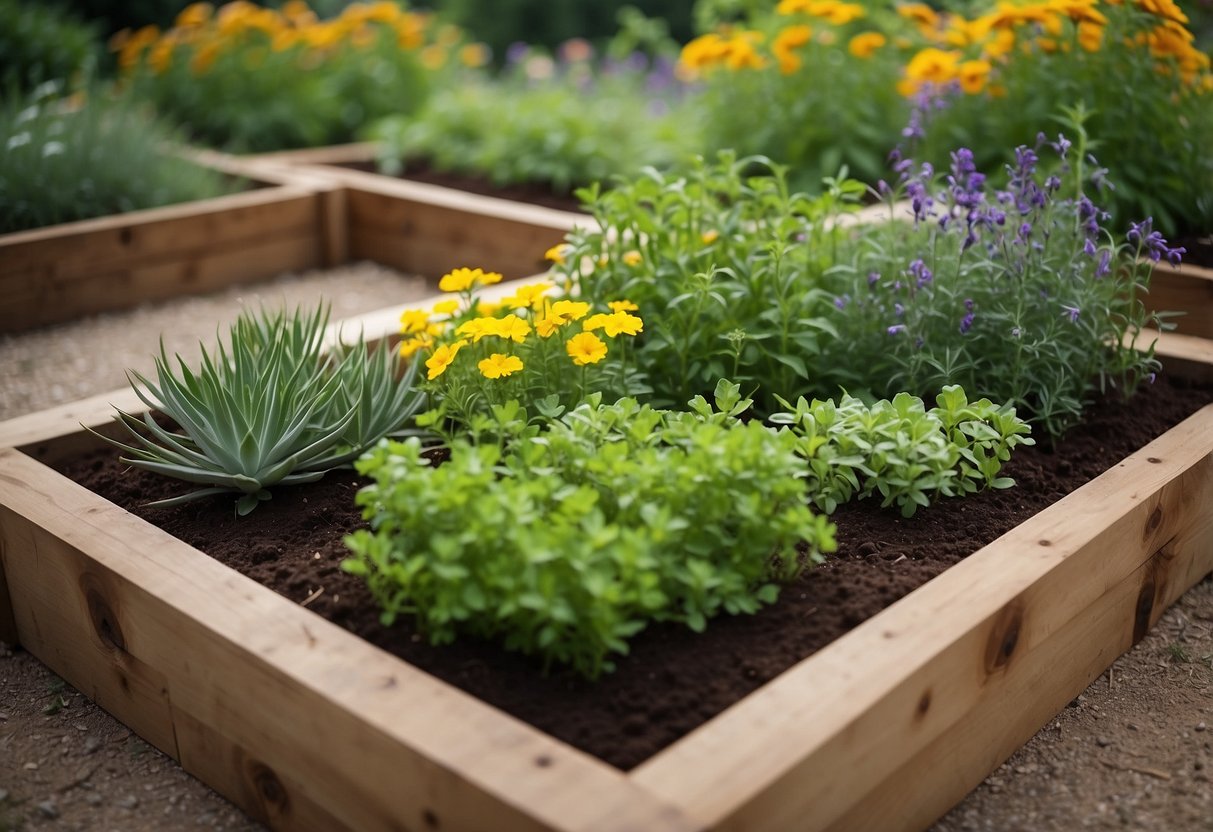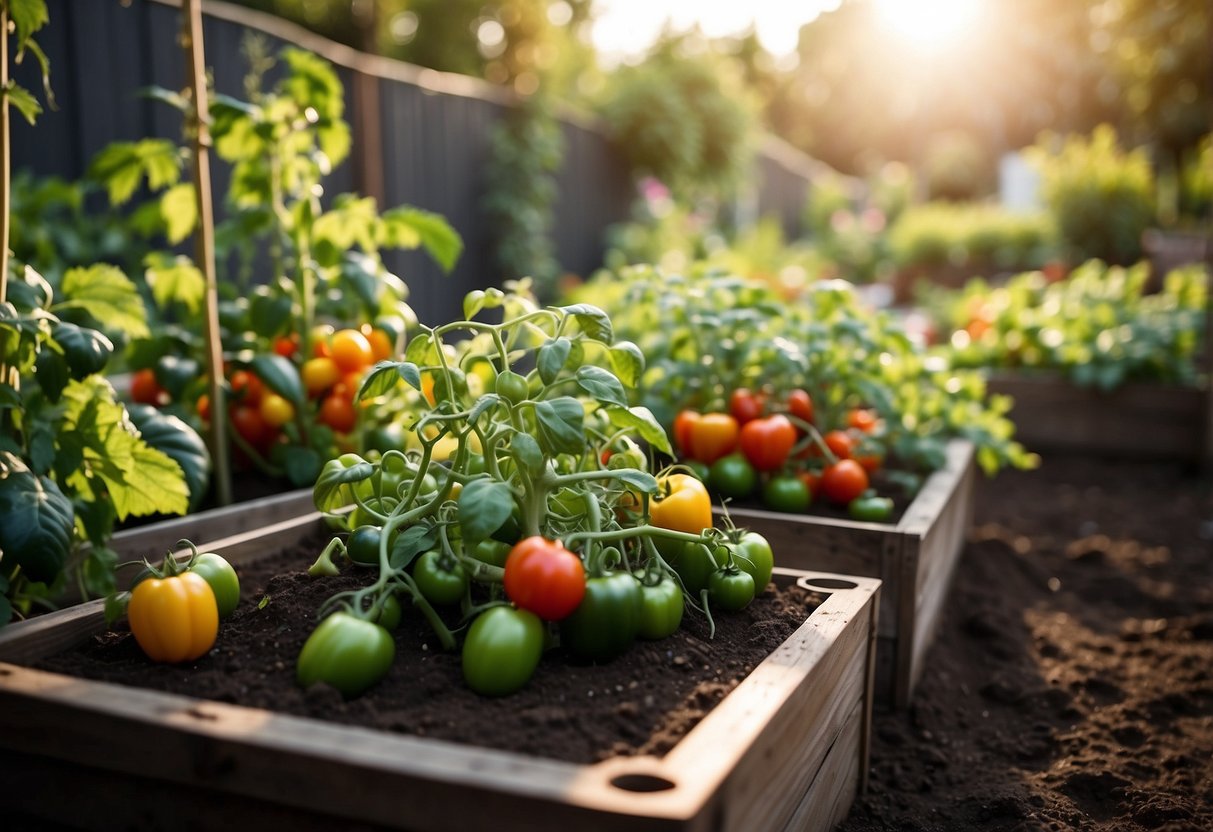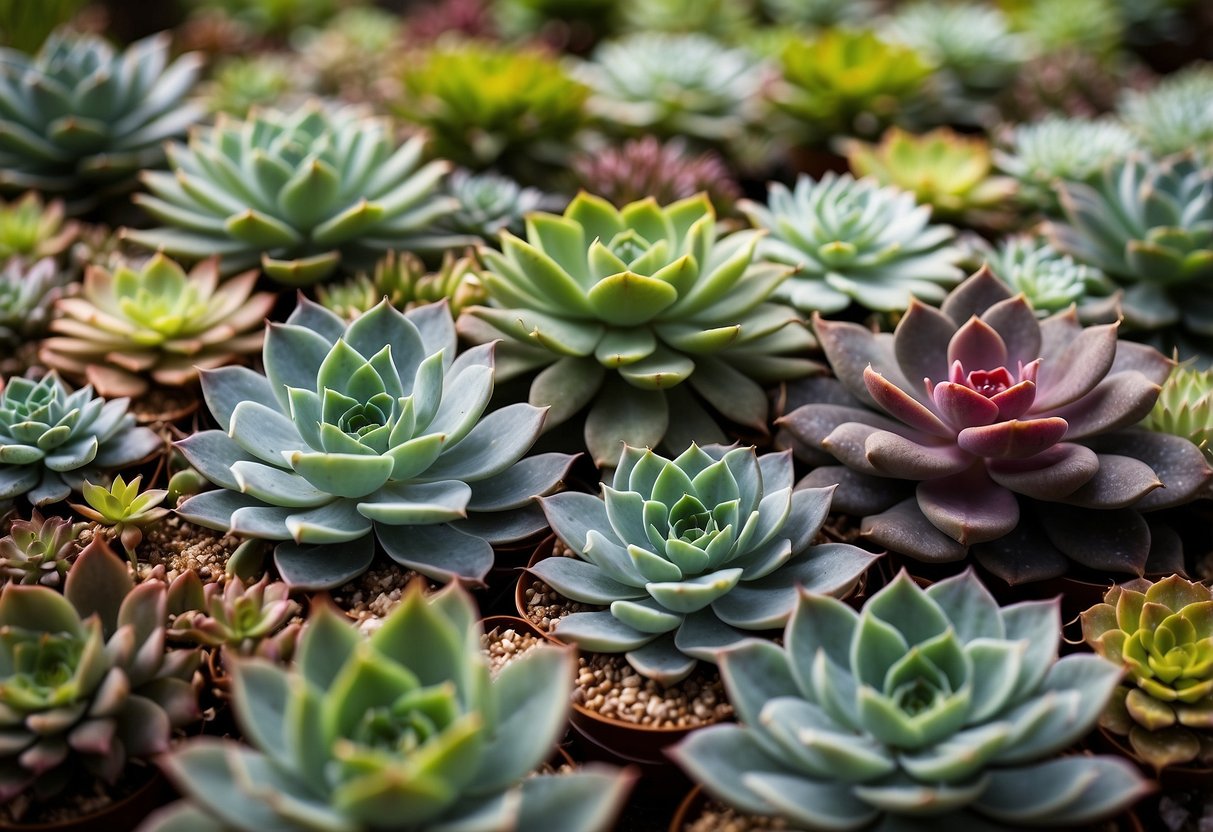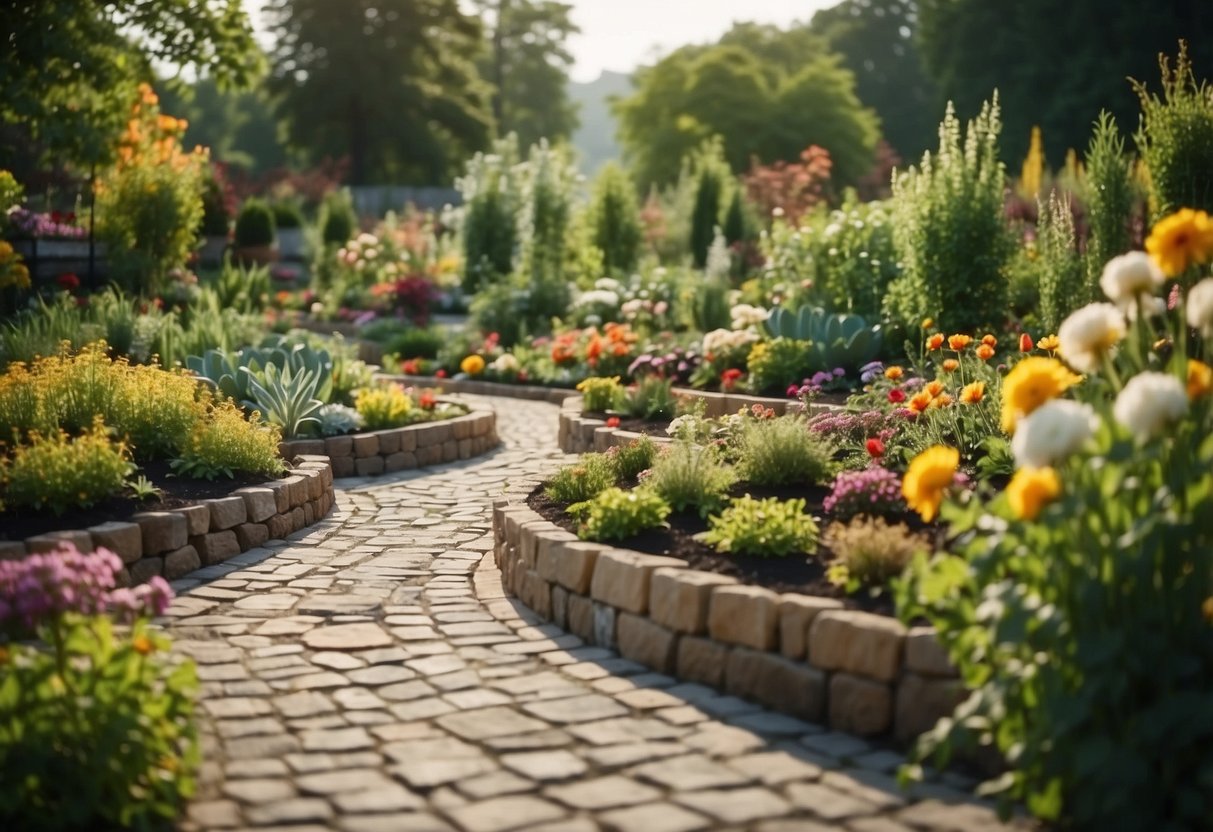10 x 10 Garden Ideas: Create Your Perfect Green Space
Creating a 10 x 10 garden can be a delightful and fulfilling project, whether you’re growing vegetables, flowers, or a mix of both. This compact size offers ample space to experiment with various planting arrangements and gardening techniques without feeling overwhelming.

What can you grow in a 10 x 10 garden to make the most of your space? With the right planning and care, you can enjoy a bountiful harvest, beautiful blooms, or a serene green space. Dive into some inspiring ideas and practical tips to transform your small plot into a thriving garden.
1) Raised Bed with Herbs

Creating a raised bed for herbs is a great way to add fresh flavors to your kitchen.
You can start with herbs like basil, rosemary, and thyme. These herbs are known for their robust growth and are easy to maintain.
Keep the taller herbs like rosemary at the back and shorter ones like thyme in the front for easy access and a prettier look.
Using a raised bed helps with drainage and can make it easier to manage weeds. This setup is perfect for small spaces.
Regular pruning will help your plants stay healthy and produce more leaves. Enjoy your fresh, homemade herbs!
2) Vertical Garden Trellis

A vertical garden trellis can add charm and functionality to your 10 x 10 garden. By utilizing vertical space, you free up ground area for other plants or features.
Choose a sturdy trellis and secure it well.
Plant climbing plants like roses or vegetables like peas to make the most of the vertical space.
A trellis painted in a bright color can also become a focal point in your garden. Attach pots or small planters to the trellis for added greenery and visual interest. Enhance it further with fairy lights for a magical touch.
3) Butterfly Habitat

Creating a butterfly habitat in your 10×10 garden is a rewarding experience. Butterflies love sunny spots, so make sure your garden gets plenty of sunlight. They use the sun to warm their bodies since they are cold-blooded.
Plant a mix of nectar-rich flowers like milkweed, coneflowers, and lavender. These attract butterflies and provide food. Group the same plants together in drifts to make it easier for butterflies to find them.
Add some stones or exposed soil to help butterflies warm up on cooler mornings. This small effort can make your garden a butterfly haven.
4) Zen Rock Garden

Creating a Zen rock garden in your 10 x 10 space can bring peace and simplicity.
Start by laying out raked gravel patterns. This can be soothing and is easy to maintain. Add a few large rocks to represent mountains, and scatter smaller stones around them.
Consider adding a water feature with pebbles to enhance the relaxing effect. The gentle sound of water can make your garden even more calming.
Adding some minimalist plants like moss or small shrubs can soften the look. Remember, less is more in a Zen garden.
5) Container Vegetable Garden

You can grow a variety of veggies in containers, making it perfect for small spaces. Tomatoes, potatoes, peppers, and eggplants do well in pots.
Fast-growing crops like peas and lettuce are also easy to grow.
Using a quality organic potting mix with good drainage is key for success. For more ideas, check out container vegetable garden ideas.
6) Colorful Flower Border

A colorful flower border can breathe life into your garden. Start with vibrant perennials like Astilbe for shades of pink, purple, and white.
Consider adding dwarf versions of plants like daylilies and irises. These compact options give you a three-season bloom cycle.
Include long-blooming flowers such as Beeline Petite Pink Veronica or catmint, which offers striking gray-green foliage and vibrant blooms. This mix will keep your garden lively and inviting.
7) Bird-Friendly Garden

Transform your 10 x 10 garden into a bird-friendly haven. First, replace any lawn space with diverse plants. A lawn offers little ecological value, so add plants that provide food and shelter.
Include tall shrubs like robins and cardinals to nest in the dense foliage. Place bird baths or small fountains to give them a water source.
Regularly clean them with a dilute bleach solution to prevent disease. Check out more garden tips at Epic Gardening.
8) Succulent Display Area

Creating a succulent display area in your garden is a fun way to add variety and texture. Succulents are perfect for small spaces because they don’t need much water or maintenance.
You can use old concrete cinder blocks to make a unique stone pathway succulent garden.
Try making succulent kokedama or Japanese moss balls and hanging them up or putting them on small dishes. These can transform even a small corner into a standout feature.
Use reclaimed stone slabs or tiles to section off areas and help with air circulation, which prevents rot and mud splash.
9) Fairy Garden

Create a magical spot in your garden with a fairy garden. Use small plants like ferns, moss, and creeping thyme to cover the ground. Add some vining plants, such as morning glory or sweet peas, to climb trellises.
Incorporate miniature accessories like tiny houses and fairy-sized furniture. These details bring an enchanting feel to your space. You can even use a small flower pot to house your fairy garden, making it easy to place anywhere you like.
For more creative ideas, check out these whimsical fairy garden tips.
10) Outdoor Seating Nook

Transform a corner of your garden into a cozy outdoor seating nook. Use a rustic wooden bench or colorful deck chairs to create an inviting spot.
Add potted plants and maybe a small water feature to enhance the relaxing vibe. Consider using lattice or privacy walls to make the area feel secluded and intimate.
For a touch of elegance, incorporate lush greenery like wisteria or ivy to create a natural canopy. This setup not only provides shade but also adds a touch of romance to your nook.
Choosing the Right Plants

Choosing plants involves considering their type and the soil they need. Both are crucial for a thriving garden.
Perennials vs Annuals
Perennials are plants that live for more than two years. They come back every spring, which means you don’t have to replant them. Examples include lavender, peonies, and hostas. They tend to be low-maintenance once established.
Annuals, on the other hand, last only one growing season. Common examples are marigolds, petunias, and zinnias. They can provide vibrant colors and fill gaps in your garden quickly but need replanting every year. By combining both, you can have a garden that offers seasonal interest and constant blooms.
Soil and Nutrient Requirements
Understanding your soil type is essential. It affects plant health and growth. Different plants have different needs. For example, some plants thrive in acidic soil while others need alkaline conditions.
Testing your soil at the start can help you know its pH and nutrient levels. Adding compost can improve soil quality by boosting nutrient content. Also, consider drainage. Plants like succulents need well-drained soil, while others like ferns thrive in moisture-rich conditions.
Choosing plants based on soil compatibility can make your garden more successful and easier to care for. Adjusting the soil’s pH and nutrients can help meet the needs of your chosen plants.
Designing Your Garden Layout

A well-thought-out garden layout can make all the difference when it comes to maximizing space and ensuring healthy plant growth. You’ll want to consider factors like plant compatibility and bed structure to create an efficient and productive garden.
Companion Planting
Companion planting involves growing plants together that benefit each other. For example, carrots grow well with onions because the onions deter carrot flies. Likewise, planting marigolds with tomatoes can help reduce pests.
Some popular companion combinations include:
- Carrots and Onions: Carrots deter onion flies, and onions keep carrot flies away.
- Beans and Corn: Beans fix nitrogen in the soil, which corn needs to grow.
- Tomatoes and Basil: Basil helps repel insects that could damage tomatoes.
You can easily find more combinations online or in gardening books. Always ensure that the plants you pair together have similar water and sunlight needs. This way, you can take full advantage of your garden space and grow healthy, thriving plants.
Using Raised Beds
Raised beds are a great option for a 10 x 10 garden. They help improve soil drainage and provide better control over soil quality. Raised beds also make it easier to manage weeds and pests.
You can build raised beds using materials like wood, stone, or metal. The beds should be filled with a mix of topsoil, compost, and organic matter. This nutrient-rich environment encourages strong root growth and healthy plants.
It’s a good idea to rotate crops in your raised beds each year. This practice prevents nutrient depletion and reduces the risk of diseases accumulating in the soil. Additionally, make sure each bed gets plenty of sunlight throughout the day, as this is vital for most vegetables and flowers.
Maintenance Tips

Taking care of a 10 x 10 garden involves knowing the best ways to water and manage pests and weeds. These tips will help you keep your garden healthy and low-maintenance.
Watering Strategies
Proper watering is crucial for your garden’s health. For a small garden like a 10 x 10 space, consider using drip irrigation or soaker hoses. These systems help deliver water directly to the plant roots, minimizing evaporation.
Mulching is another good idea. Place a layer of organic mulch around your plants. This helps retain moisture, so you need to water less frequently.
Water early in the morning. By watering early, you allow the water to seep into the soil and reduce evaporation. Watering at night can lead to fungal problems because the water stays on the leaves.
Check soil moisture. Stick your finger about an inch into the soil. If it feels dry, it’s time to water. Avoid over-watering because it can harm plant roots.
Pest and Weed Control
Managing pests and weeds effectively is essential for maintaining a small garden. One method is using companion planting. For instance, plants like marigolds can repel certain pests.
Hand-pulling weeds is practical for a 10 x 10 garden. Regularly check for new weeds and remove them before they set seeds. This keeps your garden manageable.
Natural predators can also help control pests. Encourage the presence of beneficial insects like ladybugs and spiders, which naturally prey on harmful pests.
Consider using organic pest control methods such as neem oil or insecticidal soap. These options are less harsh and safer for both your plants and the environment.
Using raised beds can reduce weed problems. They allow for better soil control, making it easier to keep out weeds and pests.
By following these strategies, you can ensure your garden flourishes with minimal effort.







